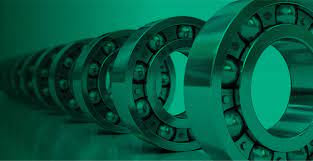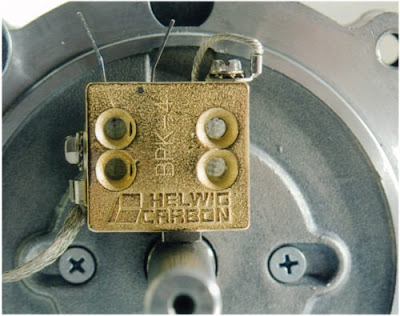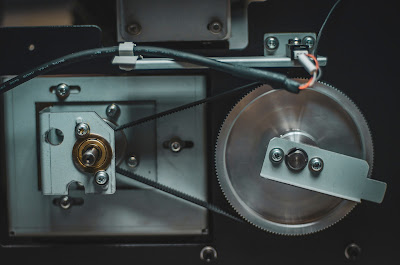Precision bearings for robotic applications
In the world of robotics, precise movements and accurate control are essential for a robot to function effectively. This is where precision bearings play a vital role. Precision bearings, also known as high precision bearings or super precision bearings, are specially designed to offer high levels of accuracy, speed, and durability. They are used in a wide range of robotic applications, such as in robotic arms, grippers, and joints, to ensure smooth and reliable performance. In this blog post, we will explore the uses and benefits of precision bearings for robotic applications in more detail. We will delve into the technical aspects of these bearings, including their materials, designs, and tolerance levels, and explain how they contribute to the precision and efficiency of robotic systems. Furthermore, we will discuss the different types of precision bearings available, such as angular contact ball bearings, cylindrical roller bearings, and tapered roller bearings, and their suitability for different robot applications. By the end of this post, you should have a better understanding of the importance
1. Introduction to precision bearings and their importance in robotic applications
Precision bearings play a crucial role in robotic applications, where movements must be highly precise and reliable. These specialized bearings are designed to meet the increasingly demanding needs of modern robotics and automation systems. In this document, we will provide an introduction to precision bearings and their importance in robotic applications. We will look at the key features and benefits of precision bearings, as well as the different types available and their respective applications. Additionally, we will explore some common challenges related to the selection, installation, and maintenance of precision bearings for robotics, and offer some best practices and tips to help you make informed and effective decisions. Whether you are a designer, engineer, or technician involved in the development or maintenance of robotic systems, this document aims to provide you with a comprehensive overview of precision bearings and their role in ensuring high performance and efficiency in today's advanced robotics applications.
2. Different types of precision bearings available for robotic applications
Robotic applications require precise and accurate mechanical systems to ensure smooth and efficient operations. One critical component in these applications is the precision bearing, which enables smooth motion and accurate positioning of robotic arms and other mechanical components. There are several types of precision bearings available for robotic applications, including ball bearings, roller bearings, and needle bearings. Each type of bearing has unique characteristics that make it suitable for specific applications. Ball bearings are the most common type and offer high accuracy and low friction. Roller bearings, on the other hand, can handle heavier loads and are ideal for high-speed applications. Needle bearings are designed for applications that require high radial load capacity and minimal space. It is essential to choose the appropriate type of precision bearing for your application to ensure reliability and optimal performance.
3. Factors to consider when selecting precision bearings for robotic applications
When it comes to selecting precision bearings for robotic applications, there are a few key factors to consider. The first is load capacity. The bearings you select must be able to handle the specific loads and forces associated with your robot’s design, whether it be radial, axial, or combined. Secondly, precision and accuracy are crucial in any robotic application, and your bearings must be able to operate with utmost precision and maintain consistent accuracy over the life of the robot. Thirdly, speed and friction are also important factors that can impact the performance of your robotic application. You need to select bearings that can operate reliably under high speeds and low friction. Finally, the environmental conditions in which your robot operates should also be considered, such as temperature, humidity, and exposure to liquids or chemicals. Taking all these factors into account when selecting precision bearings for your robotic application will help ensure optimal performance, longevity, and reliability of your robot.
4. Benefits of using precision bearings in robotic applications, such as increased accuracy and reduced maintenance
Precision bearings play a crucial role in robotic applications, where high accuracy and performance are always in demand. Although standard bearings may be suitable for some applications, the use of precision bearings can offer numerous benefits. One of the primary advantages is increased accuracy in guiding and moving robotic components. Precision bearings are designed with tight tolerances and high-quality materials that provide consistent performance, reducing the risk of inaccuracies that can result in costly errors. Additionally, precision bearings can also help reduce maintenance and repair costs by extending the lifespan of robotic components. They are designed to withstand harsh conditions, high speeds, and heavy loads, without losing their performance characteristics, reducing the need for frequent replacements. Overall, the use of precision bearings in robotic applications can improve productivity, reduce downtime, and increase the efficiency of operations.
5. Manufacturers of precision bearings must use advanced technologies, innovative techniques, and rigorous quality control protocols to achieve the required level of accuracy consistently.
In the field of precision engineering, accuracy and consistency are essential, and that is where "5." comes into play. It refers to the fifth decimal point, which is critical in producing high-quality precision bearings for robotic applications. This level of precision must be maintained throughout the entire production process to ensure that the bearings meet the stringent requirements of robotic applications, where even the slightest deviation can have a considerable impact on performance. Therefore, manufacturers of precision bearings must use advanced technologies, innovative techniques, and rigorous quality control protocols to achieve the required level of accuracy consistently.




Megjegyzések
Megjegyzés küldése